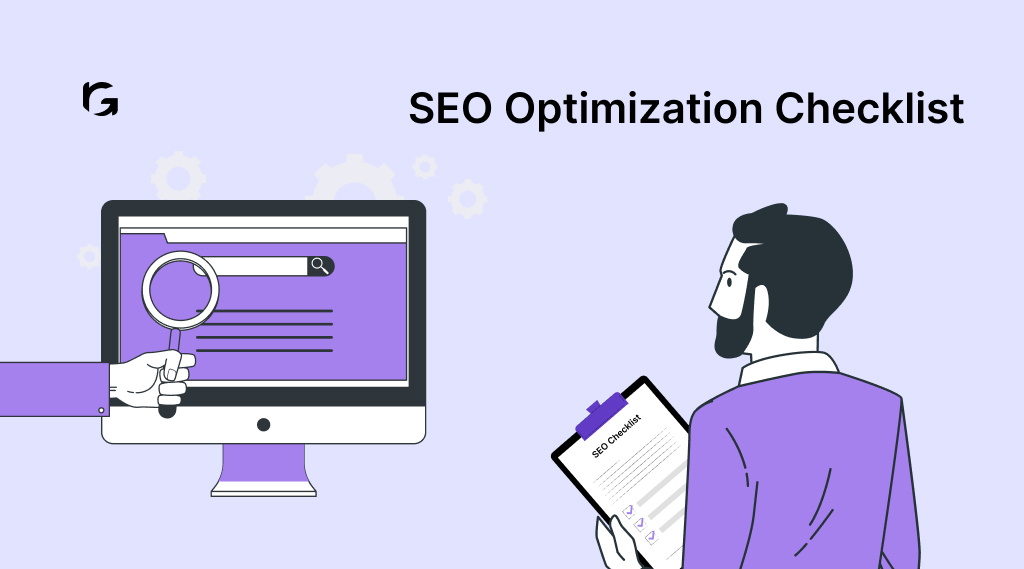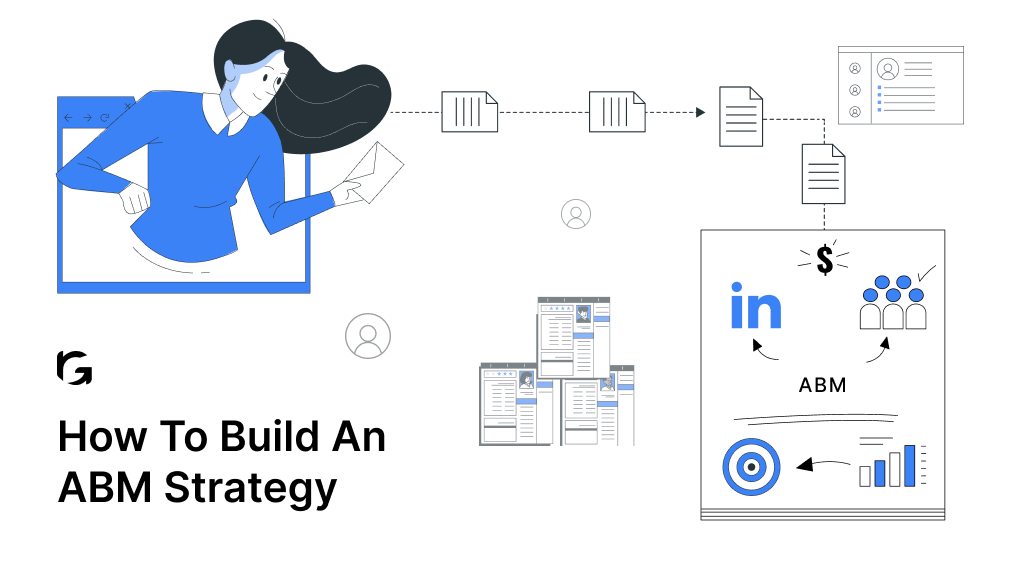Introduction
Search Engine Optimization (SEO) is the cornerstone of a successful online presence, playing a pivotal role in enhancing a website’s visibility and driving organic traffic from search engines.
As of 2024, SEO has evolved into a multifaceted discipline that goes beyond keyword stuffing and embraces a holistic approach to meet the demands of everchanging search algorithms. This introduction provides an overview of the key components and significance of SEO in the digital landscape.
At its core, SEO is the practice of optimizing a website to rank higher on search engine result pages (SERPs) for relevant queries. The ultimate goal is to attract targeted, organic traffic and increase the likelihood of conversions. In an era where users heavily rely on search engines like Google, Bing, and Yahoo to find information, products, and services, SEO is an indispensable strategy for businesses and individuals alike.
Content, in particular, has emerged as a critical aspect of SEO. Search engines prioritize websites that provide valuable, relevant, and authoritative content. Longform content, multimedia integration, and addressing user intent have become essential strategies for SEO success.
As the digital landscape continues to evolve, SEO remains a fundamental tool for those seeking to establish a robust online presence and connect with their target audience.
Here’s the ultimate guide you need to master SEO in 2024
What is SEO optimization?
SEO optimization, short for Search Engine Optimization optimization, is a multifaceted and dynamic digital marketing strategy designed to improve a website’s visibility and ranking on search engine result pages (SERPs). The primary goal of SEO is to enhance a website’s organic (nonpaid) traffic by optimizing various elements to align with search engine algorithms.
As search engines continually refine their algorithms to provide users with the most relevant and high quality results, SEO practices evolve to meet these changing criteria.
At its core, SEO optimization involves a comprehensive approach to ensure that a website is easily discoverable, accessible, and appealing to both search engines and users. Here are key components of SEO optimization:
1. Keyword Research and Integration:
Identifying and incorporating relevant keywords into a website’s content is fundamental to SEO. Keyword research involves understanding user intent and selecting terms that align with the content of the website. Proper keyword integration ensures that search engines can recognize the content’s relevance to specific queries.
2. Content Quality and Relevance:
High-quality, relevant content is a cornerstone of SEO. Search engines aim to provide users with valuable information, and websites with well crafted, informative content are rewarded with higher rankings. Content optimization includes the use of multimedia elements, clear formatting, and addressing user needs effectively.
3. Technical SEO:
This aspect focuses on optimizing the technical elements of a website, making it easier for search engines to crawl and index. It involves improving site architecture, using clean URLs, optimizing page speed, implementing schema markup, and addressing issues like duplicate content.
4. On-Page and Off-Page SEO:
On-page SEO involves optimizing individual web pages for specific keywords and user intent. Off-page SEO, on the other hand, includes strategies like building high quality backlinks, social media engagement, and online reputation management.
5. Mobile Friendly Design:
With the increasing use of mobile devices, search engines prioritize mobile friendly websites. Responsive design and mobile optimization contribute to better user experiences and can positively impact search rankings.
6. User Experience (UX):
A positive user experience is crucial for SEO success. This includes factors like intuitive navigation, clear calls to action, and a visually appealing design. Search engines consider user engagement metrics when determining rankings.
7. Regular Monitoring and Adaptation:
SEO is an ongoing process that requires continuous monitoring and adaptation. Regular analysis of website performance, tracking keyword rankings, and staying informed about industry trends and algorithm updates are essential to maintaining and improving search visibility.
In conclusion, SEO optimization is a comprehensive strategy that involves various technical, content related, and user focused elements. By implementing best practices and staying abreast of industry changes, businesses and website owners can enhance their online presence, reach a broader audience, and ultimately achieve their digital marketing objectives
Why is SEO optimization important for your SaaS business?
SEO optimization is crucial for Software as a Service (SaaS) businesses for several compelling reasons, given the competitive nature of the digital landscape and the unique challenges faced by these businesses. A well executed SEO strategy can significantly impact the visibility, credibility, and overall success of a SaaS business.
1. Increased Visibility and Traffic:
In the saturated SaaS market, having a strong online presence is vital. SEO optimization ensures that your SaaS website ranks higher on search engine result pages (SERPs), making it more visible to potential customers actively searching for software solutions. Increased visibility translates into more organic traffic, providing a steady stream of potential leads who are already interested in the type of products or services your SaaS business offers.
2. Targeted Lead Generation:
SEO allows SaaS businesses to target specific keywords and phrases relevant to their offerings. By optimizing for industryspecific terms and longtail keywords, you can attract a more targeted audience interested in the unique features and functionalities of your software.
This targeted approach not only increases the likelihood of lead generation but also improves the quality of leads, as they are more likely to convert into customers.
3. Credibility and Trust:
Users tend to trust websites that appear on the first page of search results. By optimizing your SaaS website for search engines, you build credibility and trust among potential customers.
This is especially important for SaaS businesses, where users are often making decisions about critical tools and platforms for their operations. A strong SEO presence signals to users that your business is authoritative and relevant in the industry.
4. Competitive Advantage:
SEO optimization provides a competitive edge in the crowded SaaS market. If your competitors are investing in SEO and you are not, you risk losing potential customers to them.
On the other hand, a well executed SEO strategy can help you outrank competitors, capture a larger share of the market, and establish your SaaS business as a leader in the industry.
5. Cost Effectiveness:
Compared to traditional advertising methods, SEO is a cost effective marketing strategy. Organic traffic generated through SEO is essentially free, making it a sustainable and efficient way to drive leads and conversions over the long term.
While there are initial costs associated with SEO optimization, the return on investment (ROI) is often substantial, especially considering the ongoing benefits it provides.
6. Adaptability to Industry Changes:
The SaaS industry is dynamic, with technology and user preferences constantly evolving. SEO allows your business to adapt to these changes by optimizing for new keywords, addressing emerging trends, and staying ahead of the competition.
This adaptability is crucial for SaaS businesses looking to maintain relevance and thrive in a rapidly changing landscape.
In conclusion, SEO optimization is not just a marketing strategy; it’s a fundamental necessity for SaaS businesses looking to establish a strong online presence, attract qualified leads, and compete effectively in the digital marketplace.
The investment in SEO pays off by enhancing visibility, credibility, and the overall success of a SaaS business.
What are the 3 main objectives of SEO?
Search Engine Optimization (SEO) serves multiple purposes in the digital landscape, but three primary objectives stand out as fundamental to its role in online marketing. These objectives encompass the broader goals of increasing visibility, attracting relevant traffic, and enhancing the overall user experience. Here are the three main objectives of SEO:
1. Improve Search Engine Visibility:
The primary goal of SEO is to enhance a website’s visibility on search engine result pages (SERPs). When users enter queries related to a website’s content, products, or services, SEO aims to ensure that the site appears prominently in the search results.
Improved visibility increases the likelihood of users clicking on the website link, thereby driving organic traffic.
Achieving high visibility involves optimizing various elements such as keywords, meta tags, and content. By aligning a website with search engine algorithms and best practices, SEO helps search engines recognize its relevance to specific queries, leading to improved rankings.
2. Drive Relevant Organic Traffic:
Beyond simply increasing visibility, SEO focuses on attracting relevant and targeted organic traffic. It’s not just about increasing the number of visitors but ensuring that those visitors are genuinely interested in the content, products, or services offered by the website.
Keyword optimization plays a crucial role in driving relevant traffic. By identifying and targeting keywords that align with user intent, SEO helps connect the website with individuals actively seeking information or solutions related to the site’s offerings. This targeted approach not only increases the chances of conversions but also enhances the overall quality of user interactions.
3. Enhance User Experience:
User experience (UX) is a critical aspect of SEO, and it directly influences search engine rankings. Search engines, particularly Google, prioritize websites that provide a positive and user friendly experience. This includes factors such as page speed, mobile responsiveness, intuitive navigation, and engaging content.
SEO aims to optimize websites for an optimal user experience by addressing technical aspects (technical SEO), improving content quality, and ensuring that the site is accessible and easy to navigate. Positive user experiences not only contribute to better search rankings but also increase the likelihood of users staying on the site, exploring additional pages, and ultimately converting.
What are the 5 important concepts of SEO?
SEO, or Search Engine Optimization, is a multifaceted field that involves various principles and concepts to improve a website’s visibility on search engine result pages (SERPs). Here are five important concepts of SEO, each playing a crucial role in optimizing a website for search engines:
1. Keyword Research and Optimization:
Keyword research is the foundation of SEO. It involves identifying the terms and phrases that potential users are likely to use when searching for information related to your content, products, or services. These keywords are strategically integrated into various elements of a website, including meta tags, headings, and the body of the content. Proper keyword optimization helps search engines understand the relevance of your content to user queries, leading to improved rankings.
2. Content Quality and Relevance:
Content is a central pillar of SEO. High quality, relevant content not only engages users but also signals to search engines that your website provides valuable information. Content optimization includes creating well structured, informative, and authoritative content that addresses user needs. Longform content tends to perform well, and multimedia elements such as images and videos can enhance the overall user experience.
3. Backlink Building and Off-Page SEO:
Backlinks, or incoming links from other websites to yours, are a critical aspect of SEO. Search engines view backlinks as a vote of confidence in your content. However, not all backlinks are equal – quality matters more than quantity. Building a strong backlink profile involves obtaining links from reputable and relevant websites. Off-page SEO also includes strategies like social media engagement, influencer collaborations, and online reputation management.
4. Technical SEO:
Technical SEO focuses on the behind the scenes aspects of a website to ensure it is easily crawlable and indexable by search engines. This includes optimizing site architecture, using clean URLs, implementing schema markup, and addressing issues like page speed and mobile responsiveness. Technical SEO ensures that search engines can efficiently understand and rank your website’s content.
5. User Experience (UX) and On-Page SEO:
User experience is a critical factor that search engines consider when determining rankings. On page SEO and UX are interconnected concepts that involve optimizing individual web pages for both search engines and users. This includes intuitive navigation, clear calls to action, mobile friendly design, and a visually appealing layout. On page SEO ensures that each page is optimized for specific keywords and aligns with user intent.
Understanding and implementing these five SEO concepts in a cohesive strategy can significantly improve a website’s performance on search engines.
What are the 4 stages of SEO?
The SEO process is typically divided into four stages, each representing a set of activities and strategies aimed at improving a website’s visibility on search engine result pages (SERPs) and enhancing its overall performance. These stages provide a systematic approach to optimizing a website for search engines and maximizing its online presence. The four stages of SEO are:
1. Research and Planning:
The first stage involves comprehensive research and planning to lay the foundation for a successful SEO campaign. This includes:
- Keyword Research: Identify relevant keywords and phrases that users might use when searching for products, services, or information related to your website. Use tools like Google Keyword Planner, SEMrush, or Ahrefs to analyze search volumes and competition.
- Competitor Analysis: Study competitors to understand their SEO strategies. Identify keywords they target, assess their content quality, and analyze their backlink profiles.
- Website Audit: Conduct a thorough audit of your own website to identify technical issues, content gaps, and areas for improvement. This includes assessing site architecture, URL structure, and onpage elements.
- Goal Setting: Define clear and measurable goals for your SEO campaign. Whether it’s increasing organic traffic, improving rankings for specific keywords, or enhancing conversion rates, establishing objectives is essential for tracking success.
2. On-Page Optimization:
The second stage involves optimizing the individual pages of your website for search engines. Key activities in this stage include:
- Keyword Placement: Strategically place chosen keywords in meta titles, meta descriptions, headings, and throughout the content.
- Content Optimization: Create high quality, relevant, and valuable content that addresses user intent. Optimize for readability, incorporate multimedia elements, and ensure content aligns with targeted keywords.
- Technical SEO: Address technical issues identified during the website audit, such as improving site speed, implementing schema markup, and optimizing for mobile responsiveness.
- URL Structure: Ensure clean and user friendly URLs that include relevant keywords and provide a clear hierarchy.
3. Off-page Optimization:
Off-page optimization focuses on building the website’s authority and reputation across the broader online landscape. Key activities include:
- Link Building: Acquire high quality backlinks from reputable websites. Focus on natural link building strategies, such as guest blogging, influencer outreach, and partnerships.
- Social Media Engagement: Leverage social media platforms to promote content, engage with your audience, and build brand visibility. Social signals are considered by search engines in determining rankings.
- Online Reputation Management: Monitor and manage online reviews and mentions. Positive online reputation contributes to trust and credibility, influencing search engine rankings.
4. Monitoring and Adaptation:
The final stage involves ongoing monitoring, analysis, and adaptation to ensure continued success. Activities include:
- Analytics Tracking: Use tools like Google Analytics to monitor website performance, track key metrics, and gain insights into user behavior.
- Ranking Reports: Regularly check keyword rankings to assess the effectiveness of your SEO efforts. Identify areas for improvement and optimization.
- Algorithm Updates: Stay informed about search engine algorithm updates and industry trends. Adapt your SEO strategy to align with changes and emerging best practices.
- Continuous Improvement: SEO is an iterative process. Regularly revisit and refine your SEO strategy based on performance data, user feedback, and evolving industry standards.
FAQs
1. What is the SEO triangle?
Relevance, Authority, and User Experience.
- Relevance: This involves creating content that is closely aligned with the user’s search intent. Relevant content increases the likelihood of a webpage being shown in search results.
- Authority: Refers to the credibility and trustworthiness of a website. Search engines consider backlinks, domain age, and the overall online presence of a site to determine its authority.
- User Experience: Encompasses factors such as page load speed, mobile friendliness, and overall usability. A positive user experience contributes to higher rankings in search engine results.
2. What is the golden rule of SEO?
The golden rule of SEO emphasizes the paramount importance of high quality, relevant, and valuable content. Search engines, like Google, prioritize delivering the best possible results to users. Websites with well crafted, informative, and engaging content are more likely to rank higher in search results, attracting organic traffic and establishing credibility within their niche.
3. What are the 3 C’s of SEO?
The 3 C’s of SEO represent three fundamental aspects that contribute to a website’s search engine performance.
- Content: High quality, relevant, and optimized content is crucial for attracting and retaining visitors.
- Code: The technical aspects of a website, including clean code, proper tags, and a well structured architecture, influence its visibility to search engines.
- Credibility: Building a trustworthy online presence through quality backlinks, positive user reviews, and authoritative content is essential for SEO success.
4. What are your top 3 SEO techniques?
Keyword Optimization, Quality Backlink Building, and Technical SEO.
- Keyword Optimization: Involves strategically using relevant keywords in content, meta tags, and other elements to align with user search queries.
- Quality Backlink Building: Acquiring authoritative and relevant backlinks enhances a website’s credibility and authority in the eyes of search engines.
- Technical SEO: Focuses on optimizing the technical aspects of a website, including site speed, mobile friendliness, and proper indexing, to improve its search engine performance.
5. What 4 pillars are important in SEO?
Technical SEO, On Page SEO, Off Page SEO, and Content.
- Technical SEO: Involves optimizing the technical aspects of a website, ensuring proper crawling and indexing by search engines.
- On Page SEO: Refers to optimizing individual web pages, including content, meta tags, and HTML source code, to improve their relevance and visibility.
- Off Page SEO: Encompasses external factors such as backlinks, social signals, and online reputation, contributing to a website’s authority.
- Content: High quality, relevant content is a central pillar of SEO, influencing both user engagement and search engine rankings.



